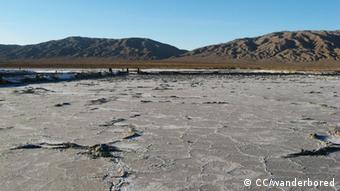Climate change skeptics argue that humans are not to blame for climate change, and they often cherrypick scientific facts to support their argument. We asked researchers to counter three of the most common theories.
Most scientists agree that climate change is a real and growing threat. From rising sea levels to melting glaciers and extreme weather patterns, our environment is changing, and they believe humans are largely to blame.
But skeptics don’t agree: so-called climate change deniers argue that people have little to no impact on global climate movements. Global Ideas picked three of the most common arguments made by climate skeptics and asked researchers to pick apart the theories behind them.
Theory 1: 'Global warming stopped in 1998'
Climate change skeptic blogs are awash with the theory that that there has been no discernible warming of the earth for years – since 1998. That date is no coincidence since 1998 was a record warm year. That was largely due to El Niño, a meteorological pattern where warm ocean water temperatures spur warmer weather every few years.
Skeptics however use 1998 as evidence to argue that the resulting dip in global temperatures points to a major reversal and that global warming has effectively “stopped” since the record warm year.
But scientists who assert that greenhouses gases, produced by human activity, are the cause of modern-day climate change, point to flaws in that argument.
“If you compare summer temperatures with winter, you’ll also see a cooling pattern,“ Urs Neu, a researcher at the SwissAcademy of Sciences in Bern, says. “When you study these trends you have to take several factors into account, including natural ones,“ he says.
He argues that volcanic eruptions and weather patterns like El Niño – or the counter phenomenon, La Niña – produce largely inconclusive results. El Niño is responsible for warm ocean currents in the eastern tropical Pacific, while La Niña generates cooler sea surface temperatures. These fluctuations in the surface temperature of oceans can cause major climatic changes across the globe, from heavy rains in Peru to severe droughts in Australia.
“If you leave such factors out of the equation, you can see very well that global warming is a continuing trend,“ says Neu.
Theory 2: 'Long winters, cold summers – what global warming?'
Changing weather patterns are another issue where climate change deniers feel strengthened in their conviction that the world is not actually getting warmer.
Many point to the winters in recent years in Central Europe as an example.
Measurements by the German Meterological Service shows that winter temperatures have dropped on an average by around two degrees over the last quarter of a century. Sceptics from the European Institute for Climate and Energy have seized on the data to argue that the earth can hardly be warming in face of these falling temperatures.


No comments:
Post a Comment